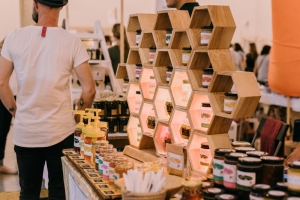please click here:
https://www.shdtimber.com/products.html
Introduction
Bosse wood, scientifically known as Guarea cedrata, is a highly valued tropical hardwood native to the lush rainforests of West and Central Africa. Its striking color, distinctive grain, and aromatic properties have made it a favorite among furniture makers, veneer specialists, and artisans worldwide. Often referred to as "African cedar," Bosse wood is prized not only for its aesthetic appeal but also for its durability and versatility. This comprehensive guide explores the botanical characteristics, physical properties, applications, and sustainability of Bosse wood, providing woodworkers, designers, and enthusiasts with essential insights into this remarkable timber.
Botanical Profile
Bosse belongs to the Meliaceae family, a group of tropical hardwoods known for their strength and attractive appearance. The tree typically reaches heights of 20–45 meters and has a straight to slightly buttressed trunk, which can yield large, clear boards suitable for furniture and veneer production. Its pinnate leaves and small clusters of flowers distinguish it from other African hardwood species.
The wood's heartwood ranges from pale pinkish-brown to medium golden brown, while the sapwood is typically pale yellow. Over time, the heartwood darkens slightly, adding warmth and richness to the timber. Bosse trees grow primarily in semi-deciduous and evergreen forests, favoring areas with consistent rainfall and well-drained soils.
Physical Characteristics
Color and Grain
One of Bosse wood's most notable features is its color and grain pattern. The heartwood exhibits shades ranging from pale pinkish-brown to golden or medium brown. The sapwood is clearly defined, making it easy to distinguish during milling. The wood's grain can be straight, interlocked, or wavy, often showing a subtle moiré or ribbon-like effect when sliced as veneer. Its medium to fine texture provides a natural luster, enhancing the visual appeal of finished products.
Aroma
Bosse is known for its unique, pleasant cedar-like aroma. Freshly cut timber releases a fragrant scent that is often compared to Spanish cedar. This aromatic quality not only adds a sensory appeal but also helps repel insects, making Bosse an excellent choice for cabinetry and musical instrument cases, including cigar boxes.
Durability and Workability
Bosse is considered moderately durable, with a density ranging from 540 to 680 kg/m³ at 12% moisture content. It demonstrates natural resistance to fungal decay and termites, although dry wood borers may occasionally pose a risk. Its interlocked grain can make machining slightly challenging, but with sharp tools and careful planning, Bosse can be planed, sanded, and finished to a smooth surface. Gluing is generally satisfactory, and pre-boring is recommended when nailing or screwing to prevent splitting.
Bosse responds well to steam bending and can hold intricate carvings, making it suitable for high-end furniture and decorative applications. Its combination of durability and workability ensures that artisans can create both functional and aesthetic products.
Common Applications
Veneer and Decorative Panels
Bosse wood is especially valued for its veneer. The striking grain patterns, often appearing as pommele or fiddleback, make it ideal for decorative panels, inlays, and high-end furniture surfaces. Veneers sliced from Bosse provide a luxurious finish for cabinets, wall paneling, and other interior design elements.
Furniture and Cabinetry
Solid Bosse wood is used in furniture making due to its strength and attractive appearance. It is commonly crafted into tables, chairs, cabinets, and decorative moldings. The wood's durability ensures that furniture made from Bosse can withstand regular use while maintaining its aesthetic appeal over decades.
Musical Instruments and Specialty Items
Due to its aromatic nature, Bosse is a popular choice for musical instruments, particularly for stringed instruments and percussion accessories. The fine grain and stability of the wood also make it suitable for specialty items like cigar boxes and jewelry boxes, where both durability and visual appeal are crucial.
Exterior and Architectural Uses
Although primarily used for interior applications, Bosse can be utilized in exterior projects such as doors, window frames, and moldings if properly protected. Its resistance to decay and insects makes it suitable for projects exposed to moderate environmental stress, although prolonged contact with moisture should be avoided to preserve its longevity.
Comparison with Similar Hardwoods
| Feature | Bosse | Sapele | Spanish Cedar |
|---|---|---|---|
| Family | Meliaceae | Meliaceae | Meliaceae |
| Color | Pale pink to medium brown | Reddish-brown to dark brown | Pale pink to reddish-brown |
| Grain Pattern | Interlocked, wavy | Interlocked, ribbon-like | Straight to interlocked |
| Aroma | Cedar-like | Mild | Strong, aromatic |
| Durability | Moderate | High | Moderate |
| Workability | Moderate | Moderate | Easy |
| Common Uses | Veneer, furniture, cabinetry | Veneer, furniture, cabinetry | Veneer, cigar boxes |
While Bosse shares similarities with Sapele and Spanish Cedar, it is distinguished by its interlocked, sometimes wavy grain patterns and its unique aromatic properties. This combination of aesthetics and scent makes Bosse particularly desirable for decorative and high-end applications.
Sustainability and Environmental Considerations
Sustainable management of tropical hardwoods like Bosse is critical to protect forest ecosystems. Overharvesting and illegal logging have threatened many African hardwood species, emphasizing the importance of responsible sourcing.
Certified products, such as those with Forest Stewardship Council (FSC) accreditation, ensure that Bosse is harvested sustainably. Choosing responsibly sourced Bosse helps maintain biodiversity, supports local communities, and promotes ethical forestry practices.
Moreover, Bosse wood's durability and versatility mean that products made from this timber can last decades, contributing to sustainability through longevity and reduced waste.
Tips for Working with Bosse Wood
-
Plan Machining Carefully: Due to interlocked grain, plan cuts in small increments to avoid tear-out.
-
Use Sharp Tools: High-quality, sharp cutting tools minimize chipping and maintain smooth surfaces.
-
Pre-Bore Holes: To prevent splitting, pre-drill holes when nailing or screwing.
-
Seal and Finish Properly: Apply finishes to enhance appearance and protect against moisture.
-
Store Correctly: Store Bosse wood in a dry, ventilated area to prevent warping and fungal growth.
Conclusion
Bosse wood is a versatile, beautiful, and aromatic hardwood that continues to captivate woodworkers, designers, and furniture enthusiasts alike. Its combination of attractive color, interlocked grain, aromatic properties, and moderate durability makes it suitable for veneers, furniture, musical instruments, and specialty items. Responsible sourcing ensures that Bosse can be enjoyed for generations while preserving the ecological balance of African rainforests. For anyone seeking a high-quality hardwood that combines aesthetics, functionality, and sensory appeal, Bosse wood remains an excellent choice.
Summary
Bosse wood (Guarea cedrata), native to West and Central Africa, is a versatile hardwood valued for its pale pink to medium brown heartwood, fine interlocked grain, and cedar-like aroma. Its durability, workability, and decorative appeal make it ideal for veneers, furniture, and specialty items, with sustainable sourcing ensuring long-term ecological balance.
Frequently Asked Questions
-
What is Bosse wood?
Bosse wood is a hardwood from the Meliaceae family, native to West and Central Africa, known for its fine texture, interlocked grain, and cedar-like aroma. -
What are the common uses of Bosse wood?
Bosse is widely used for decorative veneers, solid furniture, cabinetry, musical instruments, and specialty items like cigar boxes. -
How does Bosse wood compare to Sapele and Spanish Cedar?
While similar in family and hardness, Bosse is distinct for its aromatic properties and interlocked, sometimes wavy grain patterns, making it especially suitable for decorative applications. -
Is Bosse wood sustainably sourced?
Sustainability depends on sourcing. Choosing FSC-certified Bosse ensures responsible harvesting and supports forest conservation. -
How difficult is it to work with Bosse wood?
Bosse has moderate workability. Its interlocked grain can make machining challenging, but sharp tools, careful planning, and pre-boring holes for nails or screws facilitate smooth working.






